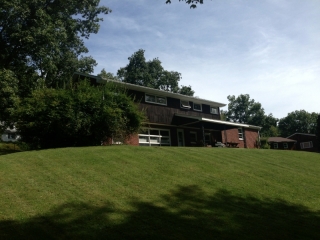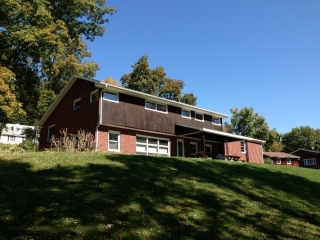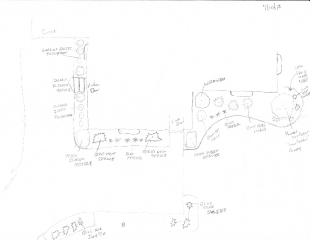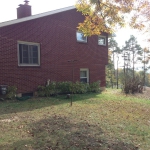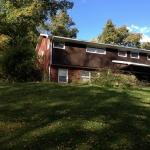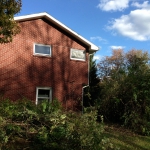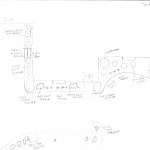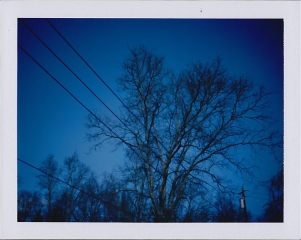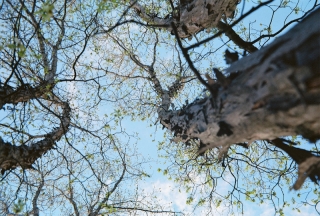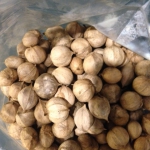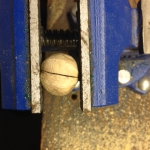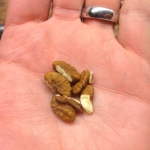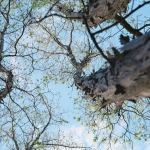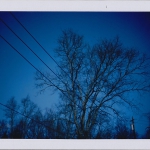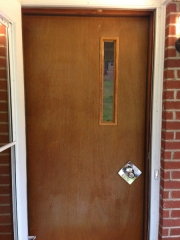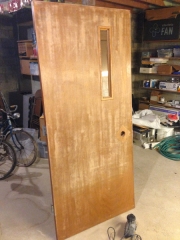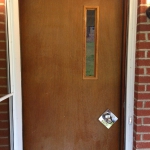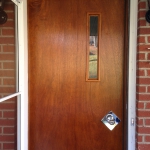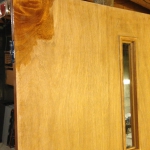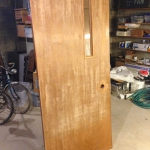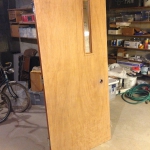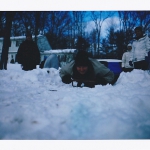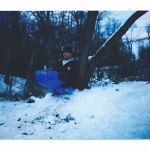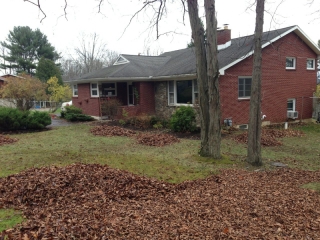In several places on the property we have forsythia bushes. They’re very pretty in the spring…for about three weeks. The rest of the year they are either dormant or just big and green. It isn’t that we don’t like them…but left to their own devices and planted in the wrong spots, a forsythia will grow completely out of control…like the ones on the back corners of the house. Here’s a shot showing the bigger one. It’s almost 20 feet tall. It is so large that when we were kids, we built a fort in the middle of it:
I have some plans for landscaping around the house, and they don’t really include the forsythia bushes. Over the summer I tackled cleaning up our front landscaping, though there is more to do there next year as well. We will probably leave the giant one next to the road so we can enjoy the color in the spring, but the ones around the house definitely have to go – they occupy the flattest places around the house and take up an enormous amount of it. So after Mary and I got settled back in from the wedding and honeymoon, I set about at least starting on the project of chopping down the forsythia. This is a multi step process. If you’re not familiar, a forsythia is a giant mess of woody stems. If they touch the ground, they root in that location and the plant grows outward. It creates a nearly impervious thicket. To cut it down required a lot of time with the lop pruner, basically going after each individual branch. Eventually, however, I did prevail and got step one completed: the forsythia is now just a big set of stumps.
Sounds great, right? Well, besides hauling away the cut branches, that isn’t enough to actually kill a forsythia. Left alone, those stumps will grow into yet another giant forsythia bush. Digging them out will require some heavy duty labor, potentially with mechanical equipment, so I am saving that for the spring. I have a whole plan for the back that includes putting in a bluestone sidewalk around the garage (originally there was a concrete sidewalk, but it was removed in the 70s after it fell apart), removing the raised flower bed my grandparents put in in the 80s, and extending the landscaping beds around the sides and back of the house, since it will look very bare. But, I do have a plan for that, too:
(Coincidentally, I also have the landscaping plan from the last time the house was landscaped, in 1997…)
Come spring, besides expecting a baby (end of April), I will have my hands full outside finishing the landscaping as well.

